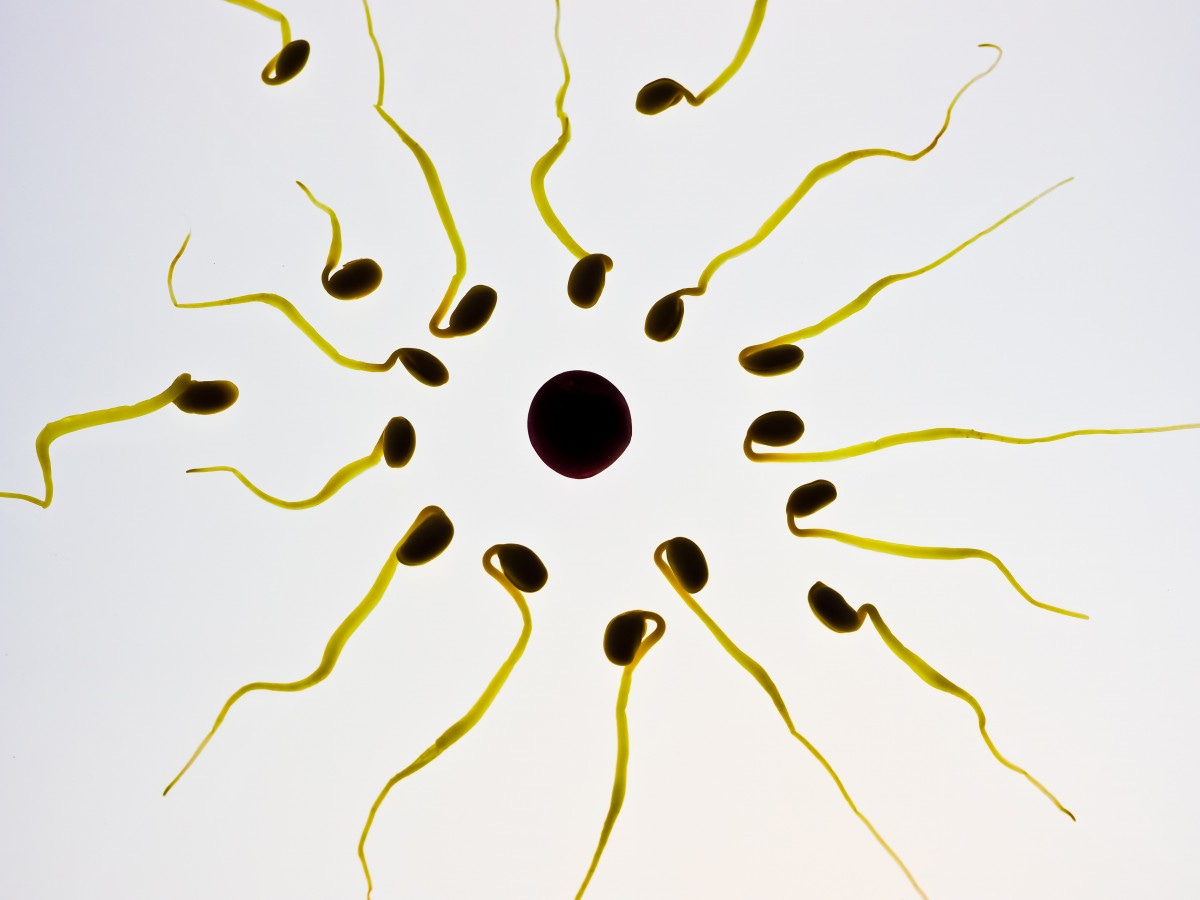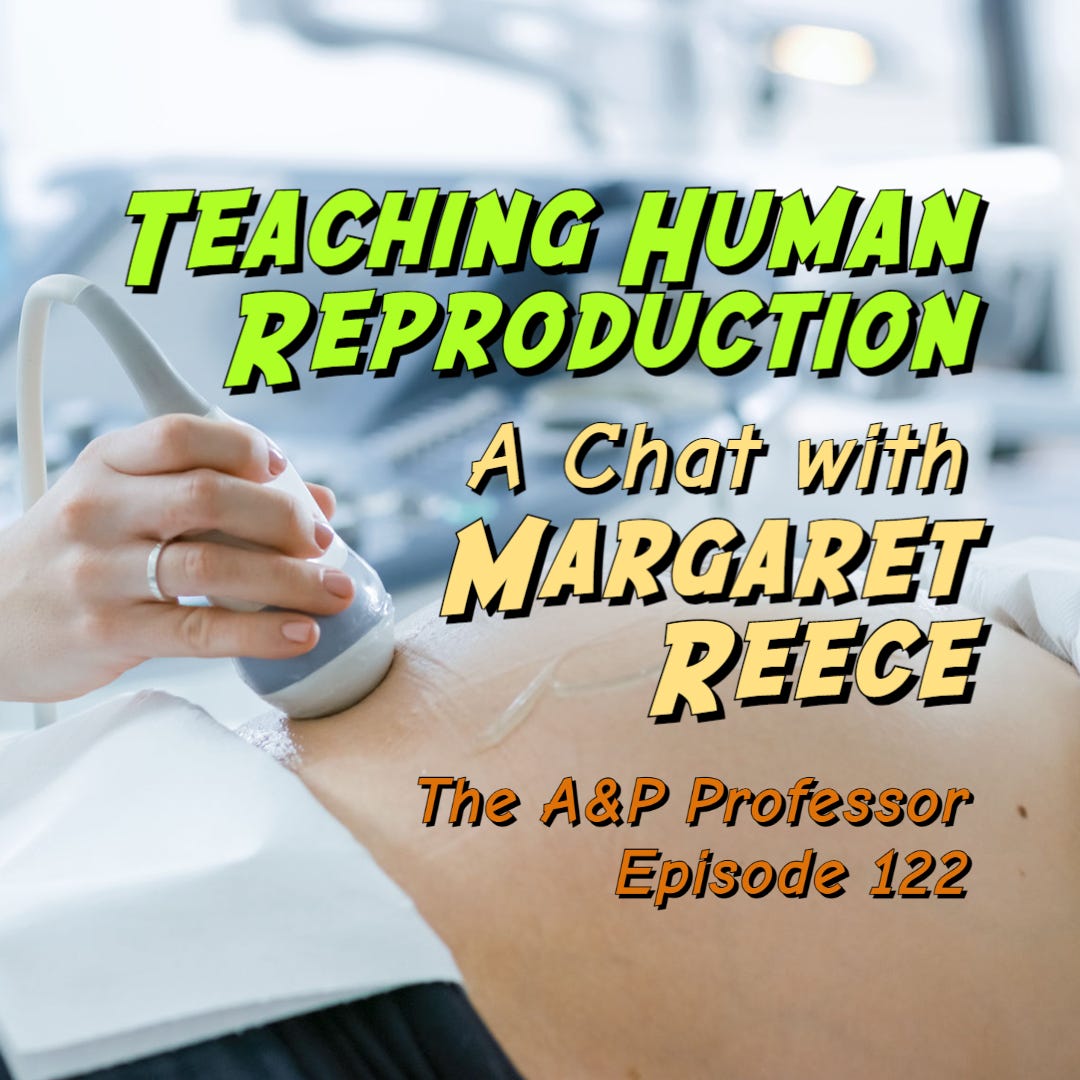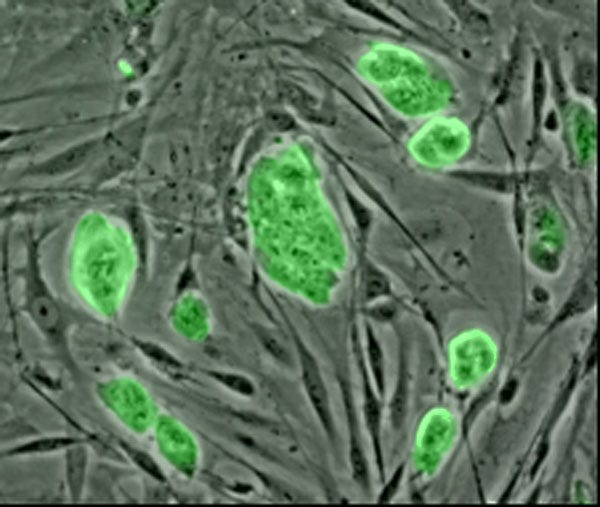Sci-Ed Update 332
Each fear's own brain region, pregnancy awakens virus, teaching repro in today's culture, stem cells reverse diabetes, up past midnight, sperm-egg hookups, gut microbiome is battlefield, more!
Your gut bacteria are at war - and force their enemies to switch sides
Your gut is a battleground where rival tribes of bacteria armed with poison darts fight for territory – and these battles are often won by armies of traitors made to switch sides by selfish DNA transferred to them by their enemies.
“The human colon is one of the most dense microbial ecosystems on Earth,” says Laurie Comstock at the University of Chicago in Illinois. There are lots of different species of bacteria, and different strains within species, fighting for the same resources.
To get the upper hand, many release toxins in an attempt to poison their rivals. Some are armed with an even more extraordinary weapon – dart guns that fire high-speed syringes for injecting poisons directly into other bacteria or larger cells nearby.
“They are a spring-loaded weapon that requires the organisms to be very close,” says Comstock.
The innocuous-sounding name for this kind of dart gun is a type 6 secretory system, or T6SS. A wide range of species are armed with them, and there is a lot of variation in how they work – the darts can contain many different toxins, for instance.
Kevin Patton comment→ I’m considering this as a starting point for the graphic novel I’ll write someday. Once I learn how to draw.
Read more→ AandP.info/4nv
Stem cells reverse woman’s diabetes — a world first
A 25-year-old woman with type 1 diabetes started producing her own insulin less than three months after receiving a transplant of reprogrammed stem cells1. She is the first person with the disease to be treated using cells that were extracted from her own body.
“I can eat sugar now,” said the woman, who lives in Tianjin, China, on a call with Nature. It has been more than a year since the transplant, and, she says, “I enjoy eating everything — especially hotpot.” The woman asked to remain anonymous to protect her privacy.
James Shapiro, a transplant surgeon and researcher at the University of Alberta in Edmonton, Canada, says the results of the surgery are stunning. “They’ve completely reversed diabetes in the patient, who was requiring substantial amounts of insulin beforehand.”
The study, published in Cell today, follows results from a separate group of scientists in Shanghai, China, who reported in April that they had successfully transplanted insulin-producing islets into the liver of a 59-year-old man with type 2 diabetes2. The islets were also derived from reprogrammed stem cells taken from the man’s own body, and he has since stopped taking insulin.
Read more→ AandP.info/0n0
The Human Mind Isn't Meant to Be Awake After Midnight, Scientists Warn
In the middle of the night, the world can sometimes feel like a dark place. Under the cover of darkness, negative thoughts have a way of drifting through your mind, and as you lie awake, staring at the ceiling, you might start craving guilty pleasures, like a cigarette or a carb-heavy meal.
Plenty of evidence suggests the human mind functions differently if awake at nighttime. Past midnight, negative emotions tend to draw our attention more than positive ones, dangerous ideas grow in appeal, and inhibitions fall away.
Some researchers think the human circadian rhythm is heavily involved in these critical changes in function, as they outline in a 2022 paper summarizing the evidence of how brain systems function differently after dark.
Their hypothesis, called 'Mind After Midnight', suggests the human body and the human mind follow a natural 24-hour cycle of activity that influences our emotions and behavior.
In short, at certain hours, our species is inclined to feel and act in certain ways. In the daytime, for instance, molecular levels and brain activity are tuned to wakefulness. But at night, our usual behavior is put to sleep.
..from an evolutionary standpoint this, of course, makes sense. Humans are much more effective at hunting and gathering in the daylight, and while nighttime is great for rest, humans were once at greater risk of becoming the hunted at this time.
According to the researchers, to cope with this increased risk, our attention to negative stimuli is unusually heightened at night. Where it might once have helped us jump at invisible threats, this hyper-focus on the negative can then feed into an altered reward/motivation system, making a person particularly prone to risky behaviors.
Read more→ AandP.info/tgv
AlphaFold reveals how sperm and egg hook up in intimate detail
An artificial-intelligence tool honoured by one of this year’s Nobel prizes has revealed intimate details of the molecular meet-cute between sperm and eggs.
The AlphaFold program, which predicts protein structures, identified a trio of proteins that team up to work as matchmakers between the gametes. Without them, sexual reproduction might hit a dead end in a wide range of animals, from fish to mammals.
The finding, published on 17 October in Cell1, contradicts a previous notion that just two proteins — one on the egg and one on the sperm — are sufficient to ensure fertilization, says Enrica Bianchi, a reproductive biologist at the University of Rome Tor Vergata, who was not involved in the study. “It’s not the old concept of having a key and a lock to open the door any more,” she says. “It’s more complicated.”
Read more→ AandP.info/pan
Teaching Human Reproduction | A Chat with Margaret Reece
Veteran A&P educator and reproduction researcher Dr. Margaret Reece joins host Kevin Patton to talk about challenges of teaching human reproduction and development. Reece also briefly discusses her online resources (MedicalScienceNavigator.com) and her experiences in helping overwhelmed A&P students succeed in their studies. This was one of our most listened to episodes! And, as you might imagine in today’s cultural climate, one of the most controversial.
To listen to this episode, click on the play button above ⏵ (if present) or this link→ theAPprofessor.org/podcast-episode-122.html
Do stem-cell transplants increase cancer risk? Long-lived recipients offer clues
Ever since the first blood-forming stem cells were successfully transplanted into people with blood cancers more than 50 years ago, researchers have wondered whether they developed cancer-causing mutations. A unique study1 on the longest-lived transplant recipients and their donors has revealed that people who receive donor stem cells don’t seem to have an increased risk of developing such mutations.
The results are surprising but reassuring, says Michael Spencer Chapman, a haematologist at the Barts Cancer Institute in London.
Read more→ AandP.info/u9p
Pregnancy Can Awaken Ancient Viruses in Your DNA, Study Reveals

Something ancient awakens in our DNA during pregnancy and moments of blood loss to drive an increased demand for red cells in the body, researchers have found.
A new study by researchers in the US and Germany has uncovered long-dormant virus fragments triggering an immune response that ramps up red blood production when it's needed most.
The surprising discovery was made through an analysis of hematopoietic (blood-forming) stem cells in mice, in which fragments of genetic code known as retrotransposons became activated during pregnancy.
The hematopoietic stem cells appear to unlock a viral process that cells have long forgotten. But it's not without risk; when awakened, the viral fragments can jump from one place to another in the genome, making changes.
Through an analysis of blood samples from pregnant and non-pregnant women, the researchers found it was likely that the same reactivation of retrotransposons seen in mice occurs in humans, too.
Further tests showed that when this process was blocked in mice, the animals developed anemia. The condition, where there's a shortage of red blood cells, is something that pregnant women are particularly susceptible to, due to the extra stresses on the body.
Read more→ AandP.info/m4h
Flown the coop at X?
Follow The A&P Professor on BlueSky at https://bsky.app/profile/theapprofessor.org
Spiders, heights, or public speaking: Each fear has a unique place in the brain
Fear strikes in many forms – standing on the edge of a towering skyscraper, glimpsing a tarantula, or feeling your heart race as you prepare to deliver a speech.
The scientific community long believed these scenarios stimulated brains similarly.
“There’s this story that we’ve had in the literature that the brain regions that predict fear are things like the amygdala, or the orbital frontal cortex area, or the brainstem,” said Ajay Satpute, an associate professor of psychology at Northeastern University.
“Those are thought to be part of a so-called ‘fear circuit’ that’s been a very dominant model in neuroscience for decades.”
In early October 2024, Satpute and his team released a study challenging this long-held belief.
The researchers used MRI scans to examine the brain’s response to three distinct fear-inducing scenarios: fear of heights, spiders, and public speaking.
Contrary to prior assumptions, the study revealed each type of fear activated different brain regions, debunking the idea of a universal “fear circuit.”
“Much of the debate on the nature of emotion concerns the uniformity or heterogeneity of representation for particular emotion categories,” noted the researchers.
The team discovered that “the overwhelming majority of brain regions that predict fear only do so for certain situations.”
Kevin Patton comment→ Next task: find the “A&P lab practical” fear region.
Read more→ AandP.info/lk0










